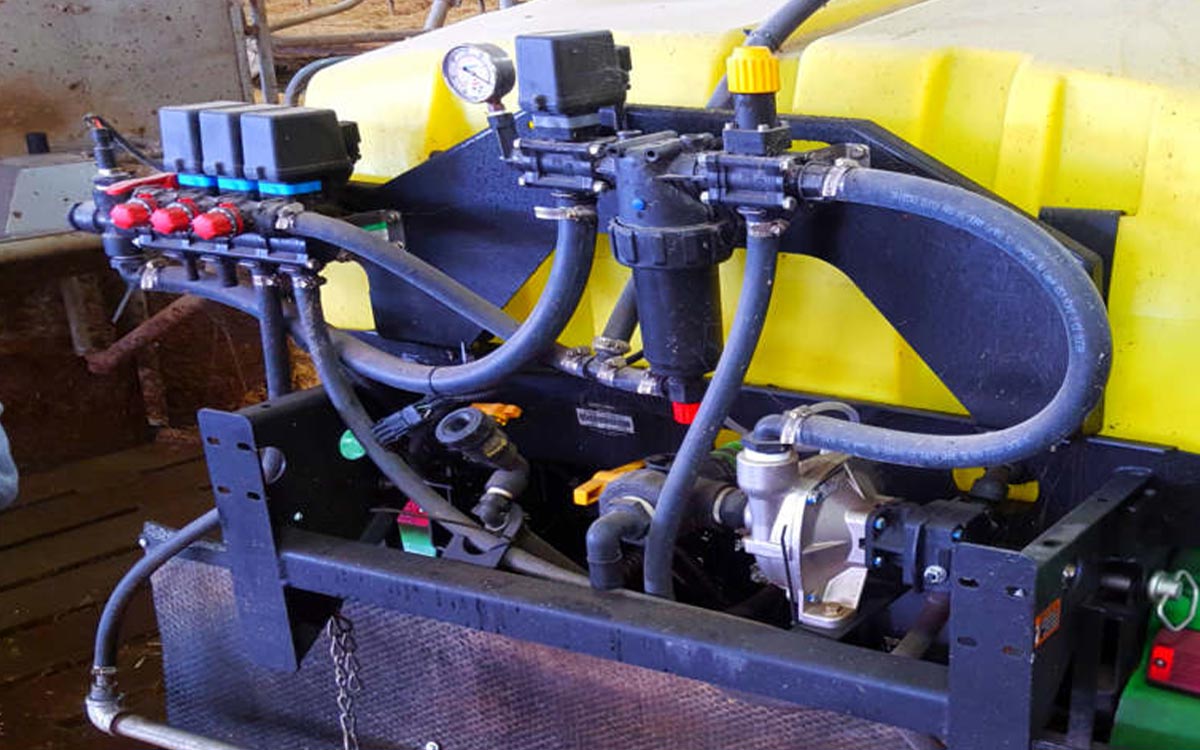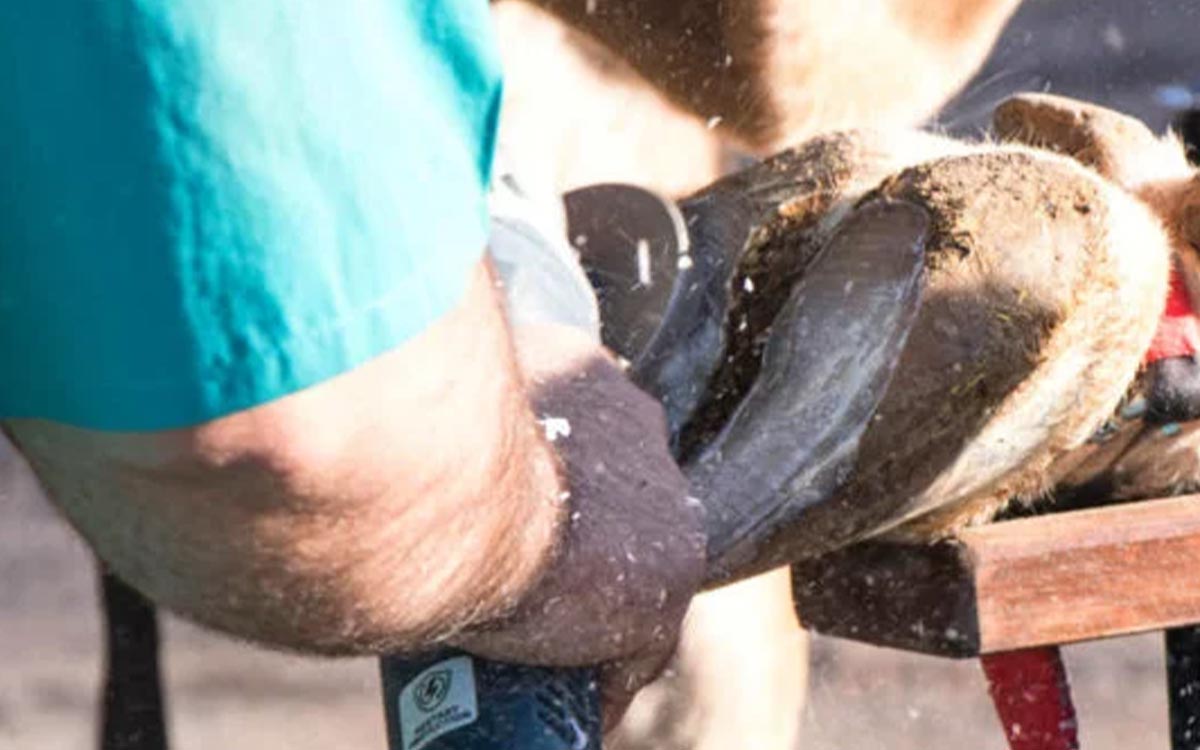Table of Contents
Warts are a common skin issue affecting cattle, causing discomfort and potential health complications. As a hoof trimmer, I encountered warts in cows and often wondered how to deal with them. In this article, I share the causes, locations, and treatment options for warts in cattle to ensure their well-being and productivity. We will delve into the world of bovine warts and guide you in effectively managing this pesky problem.
To prevent bovine warts, ensure your cattle’s environment is clean. Isolate any cows with warts to prevent the spread. If treatment is needed, warts may clear up alone, but persistent cases should be discussed with your veterinarian for possible removal or treatment.
Table of Contents
Warts are not to be confused with Digital Dermatitis.
Before we discuss understanding and treating warts in cattle, it’s important to clarify one common misconception: warts are not the same as digital dermatitis. While both conditions affect cattle’s skin, they arise from different causes and require distinct treatment approaches. Warts, specifically caused by bovine papillomaviruses (BPVs), can appear as small, harmless growths on the skin, while digital dermatitis presents as painful ulcerative hoof lesions caused by the treponema bacteria.
Although unsightly, warts tend to regress on their own over time as the animal’s immune system combats the virus. Conversely, digital dermatitis can cause pain and lameness in cattle, impacting their mobility and overall welfare. In my article Hairy Heel Warts in Cattle: Symptoms, Causes, and Treatment, I share how to deal with this hoof problem.

Causes of Warts in Cattle
Two types of viruses are predominantly behind most warts we see adorning the heads and necks of our cattle. Warts are split into two distinct types of BPVs: Bovine Papillomavirus Type 1 (BPV-1) and Bovine Papillomavirus Type 2 (BPV-2). The scientific research can be found in the Journal of Veterinary Medical Science.
Cattle with compromised immune systems or skin abrasions are more susceptible to contracting this virus, which can lead to the formation of warts. The risk of warts is significantly higher for younger stock, especially calves under two years old.
Animals that show warts are at risk of spreading infection and may be disqualified from dairy shows. When showing cattle at your local 4H event, avoid bringing warts home due to sharing, for example, halters or equipment.
Locations for Warts on Cattle
Warts can appear in various locations on a cow’s body, so it’s essential to know where they are typically found. This way, you’ll be able to identify and address them quickly.
Neck
Warts are commonly found in cattle’s necks. These growths often cluster together, affecting the animal’s appearance and potentially causing mild irritation. When headlockers are used in a dairy facility, the warts get irritated more often, and this is also a perfect area for spreading the problem to the rest of the group.
Shoulders
Warts on the shoulders can be particularly problematic, as they may interfere with the animal’s movement. Additionally, if left untreated, they can increase the risk of secondary infections.
Back
While less common than neck or shoulder warts, these growths on the back can still cause discomfort and annoyance to the animal. Regular grooming and checkups can help prevent their proliferation.
Teats and Udders
Warts on cows’ teats and udders can be an issue in dairy farming. Physical discomfort can also affect milk production and compromise udder health. When I was a cow milker, we had cows with warts on their teats that caused the machine to suck air and not milk out properly.

How To Get Rid Of Warts on Cows
Now that we’ve covered the causes and locations of warts in cattle let’s explore various treatment options that are available to manage this condition effectively. It’s worth noting that treatment methods may vary based on the size, number, and location of the warts and the animal’s overall health.
Home Remedies for Cattle Warts
In some cases, mild warts may resolve naturally without intervention. However, if you choose to pursue home remedies, it’s essential to proceed with caution and consult with a veterinarian to ensure the safety and well-being of your cattle. Popular home remedies include applying a product that contains tea tree oil or udder balm when the warts are on the teats. While these remedies may have anecdotal support, their efficacy remains largely unproven. Always prioritize your animals’ welfare and seek professional guidance when in doubt.
I have also had farmers report that the Intra Repiderma is a helpful tool to promote healthy skin and is easy to apply with an aerosol bottle.
Modern Medicine and Vaccines
Modern medical interventions can offer practical solutions to persistent or severe warts in cattle. Vaccination against specific BPVs has proven to be an invaluable tool in preventing wart outbreaks, reducing their severity, and minimizing their impact on cattle welfare. Consult your veterinarian to determine the most appropriate vaccine regimen for your herd.
Surgical Removal of Warts
Surgical removal may be necessary in severe cases or when warts pose significant health risks. This procedure involves the physical excision or destruction of warts under anesthesia. However, it’s crucial to remember that surgical intervention should be a last resort and reserved for situations where the benefits outweigh the risks.
Preventing Bovine Warts in Cows
Prevention is always better than cure when it comes to managing warts in cattle. Your herd veterinarian can assist you with setting up a protocol. The following herd management practices have been effective to minimize the spread of viruses:
- Keeping the environment clean
- Following a vaccination plan
- Isolating infected animals
By taking proactive measures, you can significantly reduce the risk of warts affecting your herd and ensure their overall health and well-being.
Conclusion
In conclusion, warts in cattle may seem like a minor issue, but they can adversely affect your animals’ comfort and productivity. Understanding the causes, locations, and treatment options for warts is essential for optimum animal welfare. By following proper prevention techniques, consulting with your veterinarian, and diligently monitoring your herd, you can effectively manage and minimize the impact of bovine warts. Always make informed decisions, prioritize the welfare of your cattle, and seek professional advice when necessary.
Q&A
Do warts on cattle affect meat?
Rest assured, warts on cattle do not typically affect the quality or safety of meat. Warts are superficial lesions on the skin and underlying tissues, not penetrating deep into the muscle. Therefore, these growths are removed during meat processing, ensuring safe and wholesome beef for consumers.
Are warts harmful to cattle?
Generally, warts are considered harmless to cattle, especially in mild cases. However, severe or extensive wart growths can cause discomfort, impair movement, and potentially lead to secondary infections if left untreated. Prompt identification and appropriate management are crucial to keeping your cattle healthy and content.
Are warts on cattle contagious?
Yes, warts on cattle can be highly contagious, mainly caused by viral infections. Direct contact with infected animals or exposure to contaminated objects can facilitate virus transmission, leading to wart development in previously unaffected cattle. Timely vaccination and strict biosecurity measures are crucial in preventing the spread of warts within your herd.
To effectively manage warts in your cattle and improve their overall health, staying informed is essential. Diamond Hoof Care’s “Hoof Clips” provides expert advice, the latest trends, and success stories to help boost your livestock’s well-being. Take advantage of the opportunity to gain valuable insights into effective hoof care and the latest technologies in the field. Sign up to receive our Hoof Clips news directly in your inbox and ensure you stay ahead in dairy hoof health management. Knowledge and support are delivered to you free of charge.





